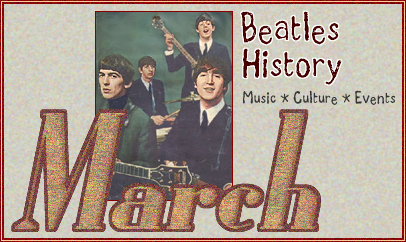 History offers History offers
a chance
to truly
understand
how the past
impacts the now.
Follow our
daily timelime
of historical
events to
discover the
role The Beatles
played in changing
the modern world.
THE FOLLOWING EVENTS TOOK PLACE ON MARCH 2
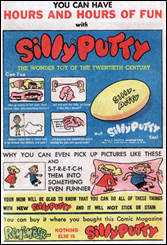 1776--Americans begin shelling British troops in Boston, Massachusetts. 1776--Americans begin shelling British troops in Boston, Massachusetts.
1807--US Congress bans the slave trade effective January 1, 1808.
1819--The United States passes its first immigration law.
1933--The most powerful earthquake in 180 years hits Japan.
1950--One of the Baby Boomers' favorite toys, Silly Putty, is invented.
 1961--The Beatles perform at Litherland Town Hall. 1961--The Beatles perform at Litherland Town Hall.
1961--The Everly Brothers had their third UK No. 1 single with Walk Right Back.
1962--President Kennedy announces that the US will resume above-ground nuclear testing.
1962--The Beatles perform at two different venues. First they play a show at St. John's Hall in Bootle, then they cross the Mersey River for a performance at the Tower Ballroom, New Brighton, Wallasey. The support group for the Bootle appearance is The Searchers (The Beatles are paid £17, The Searchers are paid £6, and paid attendance was 357). The Tower event was billed as a "Mad March Rock Ball."
1963--The Beatles, on the Helen Shapiro tour, perform at City Hall, Sheffield, Yorkshire, playing for two houses. After the second show, they drive 38 miles to Manchester, to appear on a live interview program.
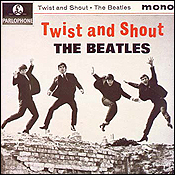 1963--After performing in Sheffield, The Beatles drive to Manchester's Didsbury Studio Centre to appear live on the ABC Television news magazine program "ABC At Large," which is broadcast to the Midlands and the north regions. Along with Brian Epstein, The Beatles give a lengthy interview with host David Hamilton. Although The Beatles do not perform on the show, a brief clip of them doing a lip-sync performance of Please Please Me, from their February 23 appearance on "Thank Your Lucky Stars," is replayed. 1963--After performing in Sheffield, The Beatles drive to Manchester's Didsbury Studio Centre to appear live on the ABC Television news magazine program "ABC At Large," which is broadcast to the Midlands and the north regions. Along with Brian Epstein, The Beatles give a lengthy interview with host David Hamilton. Although The Beatles do not perform on the show, a brief clip of them doing a lip-sync performance of Please Please Me, from their February 23 appearance on "Thank Your Lucky Stars," is replayed.
1964--The Beatles' Twist and Shout backed with There's a Place is released in the US on Tollie Records, the fourth label to release a Beatle record in America. 11 weeks on Billboard chart; highest position #2.
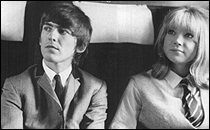 1964--Filming begins on The Beatles' first movie, "A Hard Day's Night," although the film has no title at this point. The Beatles have to join the actor's union minutes before getting on the train at Paddington Station so that filming can begin. The first week's filming is scheduled to take place on a train. On this first day, the train travels west to Minehead and then returns to London. Because of the "Beatlemania" surrounding their first day's departure, The Beatles decide to board the train on the following days at the more discreet Acton Main Line, having their chauffeurs meet them at out-of-the-way drop-off points in the evenings. Model, Pattie Boyd, whose train sequence with The Beatles is filmed this day, meets George Harrison. They would marry on January 21, 1966. 1964--Filming begins on The Beatles' first movie, "A Hard Day's Night," although the film has no title at this point. The Beatles have to join the actor's union minutes before getting on the train at Paddington Station so that filming can begin. The first week's filming is scheduled to take place on a train. On this first day, the train travels west to Minehead and then returns to London. Because of the "Beatlemania" surrounding their first day's departure, The Beatles decide to board the train on the following days at the more discreet Acton Main Line, having their chauffeurs meet them at out-of-the-way drop-off points in the evenings. Model, Pattie Boyd, whose train sequence with The Beatles is filmed this day, meets George Harrison. They would marry on January 21, 1966.
 1965--The Beatles in the Bahamas, filming their second movie, "Help!" 1965--The Beatles in the Bahamas, filming their second movie, "Help!"
1967--The Beatles in the recording studio (Studio Two, EMI Studios, London). Overdubs are recorded for Lucy in the Sky with Diamonds, including vari-speed vocals and instrument recordings. By the end of the session, the song is essentially completed, although additional mixing will be done. The Beatles Anthology 2 includes a remix of Lucy in the Sky with Diamonds (Disc two, Track 10).
1967--Winners of the ninth annual Grammy Awards for 1966 are announced. "Song of the Year" is John Lennon and Paul McCartney's Michelle.
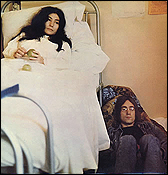 1969--John Lennon and Yoko Ono perform at Lady Mitchell Hall in Cambridge, England, before a crowd of 500. Johns plays feedback guitar as accompaniment to Yoko's non-stop screaming. They are joined for part of the performance by saxophonist John Tchikai and percussionist John Stevens, who improvise some free-form jazz. The performance is recorded and will appear on the Zapple album Unfinished Music No. 2: Life With the Lions, as the track Cambridge 1969. The general public isn't ready for John and Yoko's unconventional music. The rock magazine Rolling Stone likens Yoko's screeching to "...a severely retarded child being tortured." Another critic acidly says, "Only pain aficionados need bother." However, critics in the 1990s are inclined to judge the work more kindly, particularly since they are not weighed down by The Beatles myth in considering it. It is, however, not for all tastes. This is the first concert performance of a Beatle outside of the group. 1969--John Lennon and Yoko Ono perform at Lady Mitchell Hall in Cambridge, England, before a crowd of 500. Johns plays feedback guitar as accompaniment to Yoko's non-stop screaming. They are joined for part of the performance by saxophonist John Tchikai and percussionist John Stevens, who improvise some free-form jazz. The performance is recorded and will appear on the Zapple album Unfinished Music No. 2: Life With the Lions, as the track Cambridge 1969. The general public isn't ready for John and Yoko's unconventional music. The rock magazine Rolling Stone likens Yoko's screeching to "...a severely retarded child being tortured." Another critic acidly says, "Only pain aficionados need bother." However, critics in the 1990s are inclined to judge the work more kindly, particularly since they are not weighed down by The Beatles myth in considering it. It is, however, not for all tastes. This is the first concert performance of a Beatle outside of the group.
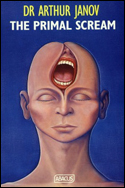 1970--John Lennon agrees to experiment with Primal Scream therapy, the psychotherapy technique pioneered by Dr. Arthur Janov. John’s interest was aroused after Janov sent him a copy of his new book, “The Primal Scream,” which chronicles the theory behind his techniques. The book states that neurosis is a defense mechanism designed by the psyche to ease forgotten childhood pain, and can be treated by uncovering the root of that pain. The “primal scream” is the moment of unleashed anguish and passion, which breaks through the defensive blocks imposed by the vulnerable psyche. “That’s me!” Lennon cried as he read the book. He invited Janov and his wife, Vivian, to stay at his Tittenhurst Park home later in the month. Says Janov: “John was really taken with Primal Therapy. He wanted to rent the QE2 and have us all sail around the world doing Primal Therapy. He wanted to buy an island and found a ‘primal nation.’” (Perhaps this was one of John Lennon’s endless obsessions that actually did him some good.) 1970--John Lennon agrees to experiment with Primal Scream therapy, the psychotherapy technique pioneered by Dr. Arthur Janov. John’s interest was aroused after Janov sent him a copy of his new book, “The Primal Scream,” which chronicles the theory behind his techniques. The book states that neurosis is a defense mechanism designed by the psyche to ease forgotten childhood pain, and can be treated by uncovering the root of that pain. The “primal scream” is the moment of unleashed anguish and passion, which breaks through the defensive blocks imposed by the vulnerable psyche. “That’s me!” Lennon cried as he read the book. He invited Janov and his wife, Vivian, to stay at his Tittenhurst Park home later in the month. Says Janov: “John was really taken with Primal Therapy. He wanted to rent the QE2 and have us all sail around the world doing Primal Therapy. He wanted to buy an island and found a ‘primal nation.’” (Perhaps this was one of John Lennon’s endless obsessions that actually did him some good.)
1975--While in Los Angeles, Paul and Linda McCartney are stopped by police when the car in which they are traveling runs a red light. Marijuana is found in Linda's purse, and she is charged with possession. Paul is driving, but he is not charged with personal possession.
1983--A new digital audio system, a five-inch compact disc containing up to one hour of music, is launched by Sony, Philips and Polygram.
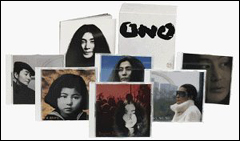
1985--Plexus Publications (in the UK) releases the book “Beatle” by Pete Best and Patrick Doncaster.
1985--The US approves a screening test for AIDS.
 1986--Yoko Ono’s world tour makes it way to West Berlin. 1986--Yoko Ono’s world tour makes it way to West Berlin.
1992--Rykodisc releases a Yoko Ono six-CD box set entitled Onobox. Among the 105 tracks are many of the songs she recorded with John Lennon between 1968 and 1980, some of them previously unreleased.
1999--Singer Dusty Springfield dies at the age of 59, just 11 days before her induction into the Rock and Roll Hall of Fame. She had been battling breast cancer for five years. She passes away at her home in Henley-on-Thames, England.
For more day-by-day history go to HistoryUnlimited.net
|
 History offers
History offers


